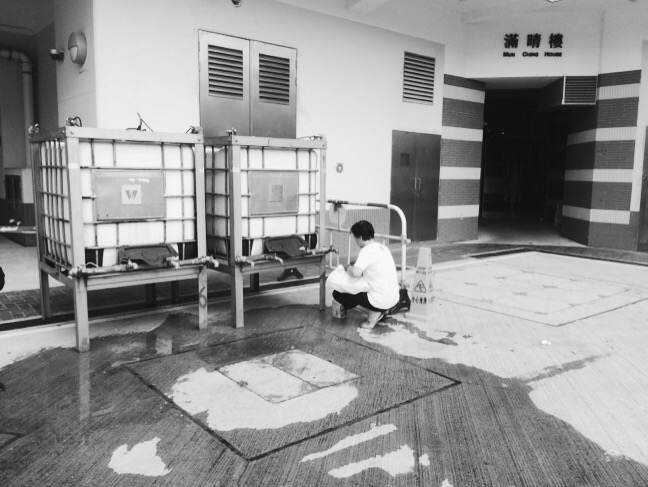Tainted Water in Public Housing Estates

An older woman is getting water from one of the open areas in front of the housing estate.
Boxes and boxes of bottled water line the outside of Kai Chung Estate in Choi Hung. The old and the young go down to the ground floor to one of the temporary water filling stations. They carry the heavy containers back to their flats. The Health Department has found water from four units, having lead levels higher than international standards.
The department has tested water at four other public housing estates and found the same. The estates tested were: Kai Chung in Choi Hung; Kwai Luen Estate in Kwai Chung; Cheung Sha Wan Estate in Sham Shui Po; Shui Chuen O Estate; Lung Yat Estate in Tuen Mun house. A total of over 50,000 residents combined is affected.
The Mayo Clinic says lead poisoning can cause organ failure. It also can cause damage to the nervous system over long periods of exposure. The most vulnerable are children, pregnant mothers and the elderly.
“After a risk assessment by the Hospital Authority, we believe the risk of poisoning is very low,” said Hospital Authority consultant Dr. Raymond Wong Sui-ming told the SCMP. “Given the level of lead found in the fresh water, the chance for people to develop symptoms is very low even if they have been drinking water for a period of time”
Inspectors suspect poor faucets made by Tin Fat Plastic (International) as the main problem. The valves were installed by China State Construction Engineering (Hong Kong) in all the affected housing estates.
The Health Department only tested the water in random flats and found levels of lead at 11 and 23 micrograms per liter exciting the standard of 10 set by the World Health Organisation. Residents are demanding the water in all flats tested.
Meanwhile at Kai Chung Estates confusion over who gets bottled water and who must use the temporary water supply escalated to the point where ten police officers needed to calm down residents. The water department said all people can get bottled water with children, pregnant women and the elderly having priority.
